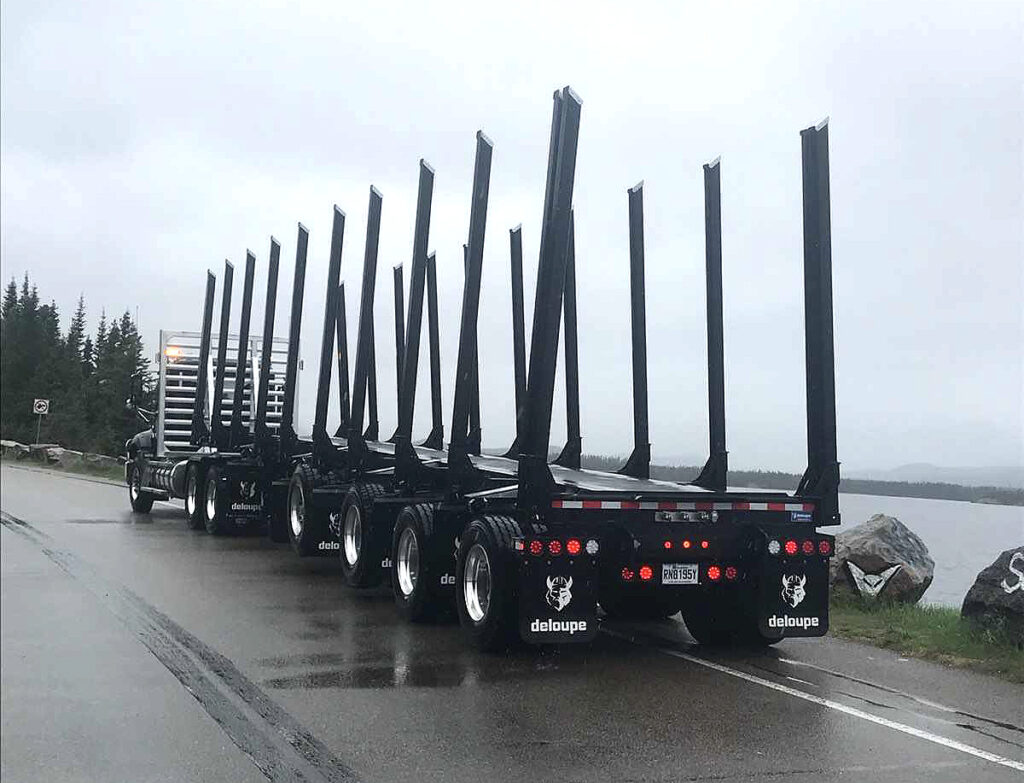Hybrid-electric forestry trailer delivers ‘promising results’
A prototype forestry trailer with an electric drive axle appears to be delivering “promising results” in terms of fuel economy and greenhouse gas emissions.
Using a trailer with one conventional axle powered by an electric motor, FPInnovations says its tractor-trailer achieved 12% fuel savings and could reduce annual GHG emissions by an equivalent of 23 tonnes of carbon dioxide.
The non-profit research and development group is behind the prototype developed in a project with Deloupe and Voltari Power, a subsidiary of Voltari Marine Electric.

More than $1.8 million in funding was provided through Natural Resources Canada’s Clean Growth Program and its Forest Innovation Program, Quebec’s Innov-R program through the research and development consortiums (InnovÉÉ), and British Columbia’s Ministry of Forests.
“To reduce harmful greenhouse gas emissions and help fight climate change, we need to develop and deploy non-emitting solutions in every sector of the economy,” federal Natural Resources Minister Jonathan Wilkinson said in a press release. “The promising work done by FPInnovations shows that Canadian innovators can implement these solutions to help drive sustainable economic growth.
‘Amazing results’
“We are very excited with these amazing results, which not only meet our goals of reducing greenhouse gas emissions and fossil fuel consumption, but also demonstrate the potential of FPInnovations and its partners to develop promising greener technologies for the forest transportation sector,” added FPInnovations president and CEO Stephane Renou.
The trailer also included load cells that monitored the push and pull between the trailer and truck, and its entire electric system could be reused when the trailer itself is replaced.
The first round of tests will also inform a second phase that will include developing an electric trailer powered by biomass, and a more robust prototype for testing on forestry roads.
Tests completed this February and March followed the American Trucking Associations’ Technology and Maintenance Council’s (TMC) fuel consumption test procedure, and were conducted on a 105-km paved road including an 89-km mountainous section with a 355-meter change in elevation.
Fuel savings ranged between 10.5% and 14.1% per test run, and reached 17.5% on uphill stretches and 9.4% on downhill grades. Those results could also increase with an improved prototype, FPInnovations adds.
Drivers involved in the test also said they appreciated the power reserve and energy recovery on steep grades and during stop-starts in rush-hour traffic, the organization reports.
Have your say
This is a moderated forum. Comments will no longer be published unless they are accompanied by a first and last name and a verifiable email address. (Today's Trucking will not publish or share the email address.) Profane language and content deemed to be libelous, racist, or threatening in nature will not be published under any circumstances.
Been watching the development of these electric non drive axles..
It is technology that is late to the market. Glad someone is taking it serious and trying integrate them.
Lots of room for motors and batteries especially.
Logging is one huge application as is the long haul sector.
Forget totally electric Class 8 trucks for awhile and push this technology.
Who would turn down 14- 20% (and could be more) fuel savings and keep the diesels in your fleet.